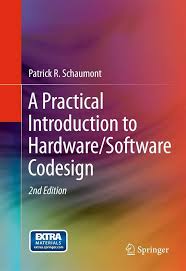White Paper
An Introduction to Practical Hardware-Software Codesign
Authors:
-
IASR Admin
-
ias-research.com
Abstract
Hardware-software codesign (HSDC) is a critical discipline in the design of modern electronic systems. It involves the simultaneous design of hardware and software components to achieve optimal performance, cost, and power consumption. This white paper provides a comprehensive introduction to HSDC, covering key concepts, methodologies, and tools.
Introduction
The increasing complexity of electronic systems has necessitated a shift towards more integrated and efficient design methodologies. HSDC offers a unified approach to designing systems that combine hardware and software components. By considering both hardware and software aspects from the outset, designers can optimize the overall system for performance, power, and cost.
Key Concepts
-
Hardware-Software Partitioning: The process of dividing the system's functionality between hardware and software components.
-
Co-Simulation: The simultaneous execution of hardware and software models to verify their interaction and performance.
-
Hardware-Software Interface (HSI): The communication mechanism between hardware and software components.
-
Design Space Exploration: The process of exploring different design options to find the optimal solution based on performance, power, and cost constraints.
HSDC Methodologies
-
Top-Down Design: Starting with a high-level system specification and gradually refining it into hardware and software components.
-
Bottom-Up Design: Starting with individual hardware and software components and integrating them into a complete system.
-
Co-Design: A combination of top-down and bottom-up approaches, where hardware and software components are designed concurrently.
HSDC Tools
-
Modeling Tools: SystemC, VHDL, Verilog, and MATLAB/Simulink are commonly used for modeling hardware and software components.
-
Simulation Tools: Co-simulation tools, such as SystemC-TLM and transaction-level modeling, are used to verify the interaction between hardware and software components.
-
Synthesis Tools: High-level synthesis tools can automatically generate hardware implementations from high-level behavioral descriptions.
Case Studies
-
Embedded Systems: HSDC is widely used in the design of embedded systems, such as automotive electronics, consumer devices, and industrial control systems.
-
SoC Design: HSDC is essential for designing System-on-Chip (SoC) architectures, which integrate multiple hardware components on a single chip.
-
Real-Time Systems: HSDC is used to design systems with strict real-time requirements, such as medical devices and industrial automation systems.
Conclusion
HSDC is a critical discipline for designing modern electronic systems. By considering both hardware and software aspects from the outset, designers can optimize the overall system for performance, power, and cost. This white paper has provided a comprehensive introduction to HSDC, covering key concepts, methodologies, and tools.
References
-
Hardware-Software Codesign by Wayne Wolf. Morgan Kaufmann, 2011.
-
SystemC: The Next Generation of System-Level Modeling by Janick Bergeret and Jean-Pierre David. Kluwer Academic Publishers, 2005.
-
Embedded Systems Design: An Introduction to Programming and Computer Architecture by David Harris and Sarah Harris. Morgan Kaufmann, 2021.
-
Digital Systems Design: A Modern Approach by John F. Wakerly. Prentice Hall, 2017.
-
High-Level Synthesis: A Practical Approach by David L. Black. Morgan Kaufmann, 2008.
Note: The specific references you may need to cite will depend on the content and focus of your work. Be sure to carefully review the guidelines of your assignment or publication to ensure that you include all necessary references. Contact ias-research.com



